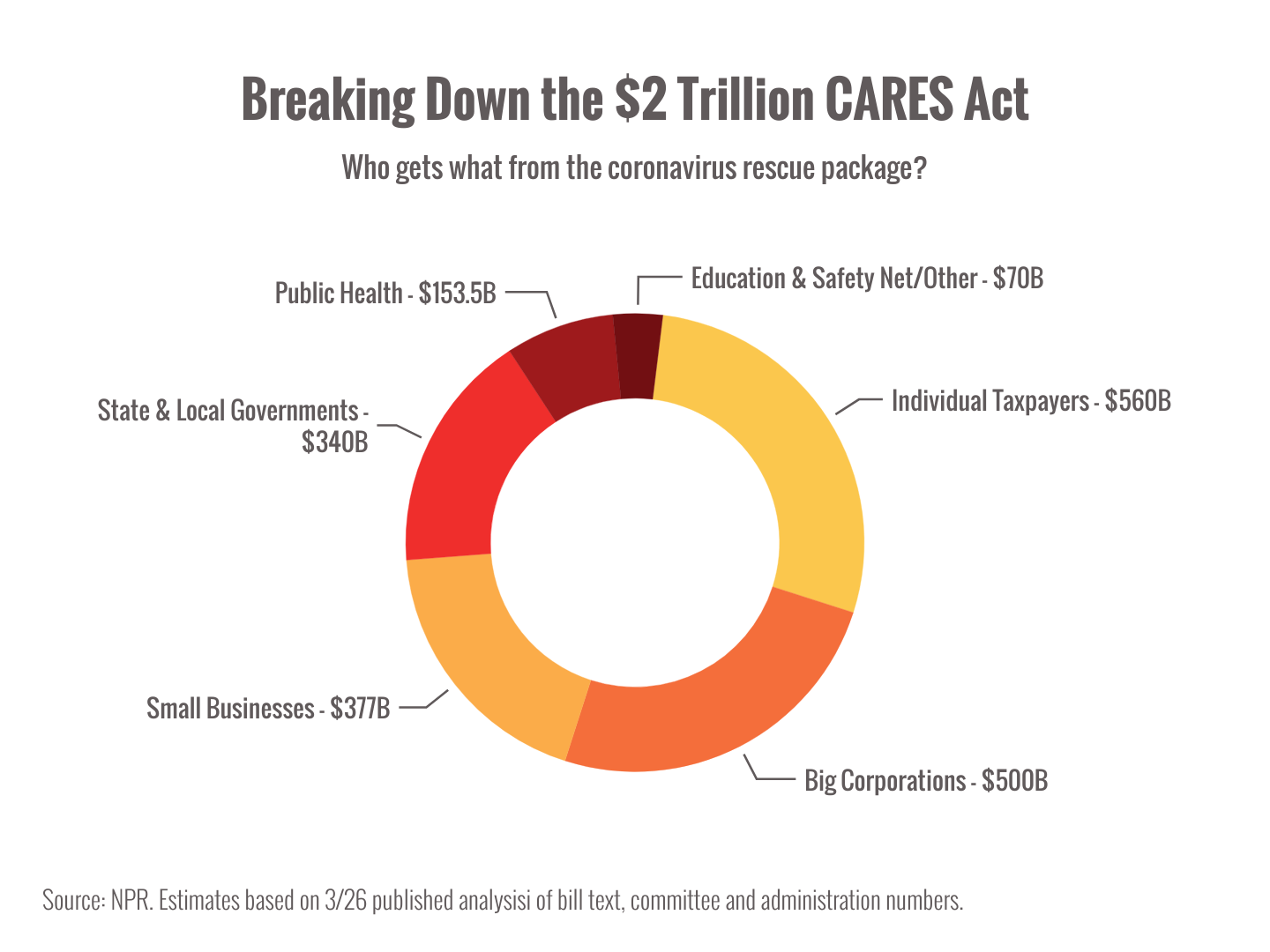Stimulus Payment Details from the CARES Act: What You Need To Know
The Coronavirus has infected our life in many deeply personal ways. Our lives are disrupted by quarantine, a stay-in-place order, and more people are getting sick. The stock market has been incredibly volatile. The kids are out of school. Restaurants and shopping malls are closed. More than three million unemployment claims were filed in one week.
At the Brown household, we've been dealing with the myriad of new changes rippling through our community. Suddenly, our kids are home from school, claiming how bored they are many times throughout the day, and we're trying to maintain a sense of normalcy, while not letting on that we're stressed. The kids also seem to be eating way more than normal, which means more frequent trips to the grocery store. Even this feels unusual, with many stores, such as Costco, only allowing a certain number of people in the store at one time, which results in long lines outside.
This new normal is far from routine. OK, except for the "I'm bored" complaint from my kids. But, everything else is upside down.
After a lot of talk, Congress did something. President Trump signed into law the Coronavirus Aid, Relief, and Economic Security Act, (CARES Act), a $2 trillion stimulus package to mitigate the impact of the Coronavirus pandemic.
The CARES Act is designed to provide relief for individuals and businesses who have been hurt by the outbreak. I won’t try to include all 800+ pages in this post, but I did want to focus on what most people want to know more about: the Stimulus Payment.
Stimulus Payment: Who Gets it and How Much?
Individuals with adjusted gross income (AGI) up to $75,000 a year are eligible for the full $1,200 payment. The payment is reduced by $5 for every $100 in income above $75,000. The payment amount is entirely phased out at an AGI of $99,000.
Married filing joint couples with AGIs up to $150,000 a year are eligible for a $2,400 payment. The payment is reduced by $5 for every $100 in income above $150,000. The payment amount is entirely phased out at an AGI of $198,000 (if the taxpayers have no dependent children). Married couples also will receive an additional $500 for every dependent child under 17.
Example - MFJ with no children. Bill and Susan are married filing joint. They have no dependent children. If they have AGI of $150,000 or less, they are eligible for a $2,400 payment. If they have AGI above $150,000, their rebate will be reduced and finally phased out at an AGI of $198,000.
Example - MFJ with two children. Steve and Emily are married filing joint. They have two dependent children under age 17. If they have AGI of $150,000 or less, they are eligible for a $3,400 payment. If they have AGI above $150,000, their rebate will be reduced and finally phased out if their income hits the top of the threshold amount.
Head of household filers with AGIs up $112,500 a year are eligible for the full $1,200 payment and an additional payment of $500 for each dependent child under age 17. The payment is reduced by $5 for every $100 in income above $112,500. Head of household taxpayers will also receive an additional $500 per dependent child under age 17. With no eligible children, a head of household filer is phased out at AGI of $137,000. With one eligible dependent child, a head of household filer is entirely phased out of the rebate payment at AGI of $146,400.
Example. Head of Household- no children under 17. Sarah has an 18-year-old high school senior living with her and qualifies as a head of household filer. If her AGI is $100,000, Sarah's payment is $1,200. Her dependent child does not qualify her for the additional $500 payment because the child is not under age 17. If Sarah's dependent child is under age 17, her payment is $1,700.
Phaseout of the rebate. If your income is above the threshold amounts, a reduced payment will result. The reduced amount using your own income (AGI) can easily be calculated using the Washington Post calculator.
What Needs to be done to get the Stimulus Rebate?
Nothing. The IRS will deposit the calculated amount directly into your bank account, using the AGI and the bank information on your 2019 tax return. If your 2019 return hasn’t been filed, the IRS will use the AGI and the bank information from your 2018 tax return. If there’s no bank information on the return, the IRS will mail a check.
When Will Payments Arrive?
The IRS says that a direct deposit should be in your bank account in about three weeks. Checks should start arriving in six to eight weeks.
2020 Tax Return
Technically the stimulus rebate is a 2020 refundable tax credit. The payment received in the next few weeks is an IRS advance. If you have less income in 2020 than in 2019 because of layoffs, reduced hours and closed businesses, and your rebate payment was reduced by the income threshold, you’ll receive a credit for the difference on your 2020 return. If for some reason, you receive too much of an advanced payment, you do not have to pay back the excess.
Want to know more about how the CARES Act directly impacts you and your money? Schedule a no-obligation chat with me below.

